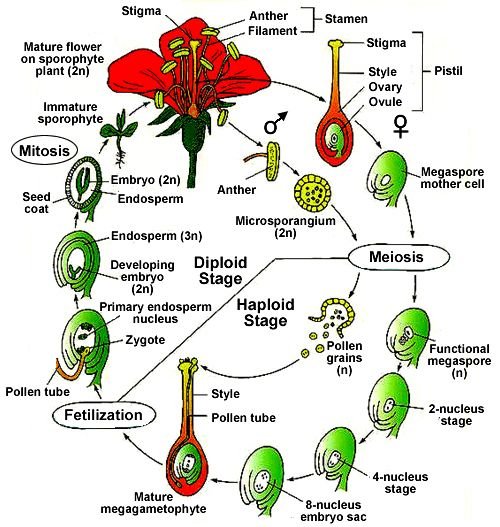Electric Current: Definition, Types and Measurement
Introduction to Electric Current
Electric current is one of the fundamental concepts in electricity and forms the backbone of modern electrical and electronic systems. From the lights in our homes to the smartphones in our pockets, electric current enables countless technologies that define our modern world. In this comprehensive guide, we’ll explore the concept of electric current in detail, examining its definition, types, measurement, and applications in both theoretical and practical contexts.
Definition and Basic Concepts
Electric current is defined as the rate of flow of electric charge through a given cross-sectional area. If Δq is the amount of electric charge passing through a cross-section in time Δt, then the current I is given by:
In the SI system, electric current is measured in amperes (A), where 1 ampere equals 1 coulomb of charge passing per second:
In metallic conductors, electric current is carried by the flow of electrons, which have a negative charge. By convention, however, we define the direction of electric current as the direction of positive charge flow. This means that in a metallic wire, the electric current flows in the opposite direction to the electron flow.
Important Note
The conventional direction of current (positive to negative) was established before the discovery that electrons (which are negatively charged) are the charge carriers in metals. This historical convention remains in use despite the fact that it is opposite to the actual electron flow in metallic conductors.
Types of Electric Current
Electric current can be classified into two main types: Direct Current (DC) and Alternating Current (AC).
Direct Current (DC)
In direct current, the electric charges flow in one direction only. The magnitude of the current may vary with time, but the direction remains constant. DC is produced by sources such as batteries, solar cells, and DC generators.
Alternating Current (AC)
In alternating current, the flow of electric charges reverses direction periodically. The current alternates between positive and negative values, typically following a sinusoidal pattern represented by:
Where \(I_0\) is the peak current, \(f\) is the frequency in hertz, and \(\omega = 2\pi f\) is the angular frequency in radians per second.
| Characteristic | Direct Current (DC) | Alternating Current (AC) |
|---|---|---|
| Direction | Unidirectional | Periodically reversing |
| Graph | Straight or varying line above zero | Sinusoidal wave |
| Sources | Batteries, solar cells, DC generators | AC generators, power plants |
| Applications | Electronics, automotive systems | Power transmission, household electricity |
| Energy Loss | Higher over long distances | Lower over long distances |
Measurement of Electric Current
Electric current is measured using an instrument called an ammeter. An ammeter must be connected in series with the circuit element through which the current is to be measured. Modern digital multimeters can measure both DC and AC currents with high precision.
Current Measurement Techniques
- Direct Measurement: Using an ammeter connected in series with the circuit
- Indirect Measurement: Measuring the voltage drop across a known resistance (Ohm’s law)
- Hall Effect Sensors: Using the Hall effect to measure current without breaking the circuit
- Current Transformers: Used for measuring high AC currents in power systems
- Rogowski Coils: Flexible current sensors that can be wrapped around conductors
Measurement Precaution
An ideal ammeter should have zero resistance to avoid affecting the current being measured. In practice, ammeters have very low but non-zero resistance. Always ensure that an ammeter is connected in series with the circuit element, never in parallel.
Mathematical Equations Related to Electric Current
Current Density
Current density \(\vec{J}\) is defined as the electric current per unit area. It is a vector quantity whose direction is the same as the direction of current flow:
Where \(I\) is the current, \(A\) is the cross-sectional area, and \(\hat{n}\) is the unit vector in the direction of current flow.
Relation with Electric Field
In a conducting material, the current density is related to the electric field \(\vec{E}\) by Ohm’s law in vector form:
Where \(\sigma\) is the electrical conductivity of the material.
Continuity Equation
The continuity equation for electric charge relates the current density to the rate of change of charge density \(\rho\):
This equation expresses the conservation of electric charge.
Numerical Examples
Example 1: Calculating Current from Charge
Problem: A metal wire carries a charge of 15 coulombs in 5 seconds. Calculate the electric current in the wire.
Solution:
Given:
- Charge (Δq) = 15 coulombs
- Time (Δt) = 5 seconds
Using the formula for electric current:
Answer: The electric current in the wire is 3 amperes.
Example 2: Current Density Calculation
Problem: A copper wire with a circular cross-section of radius 1 mm carries a current of 2 amperes. Calculate the current density in the wire.
Solution:
Given:
- Current (I) = 2 amperes
- Radius (r) = 1 mm = 0.001 m
First, calculate the cross-sectional area:
Now, calculate the current density:
Answer: The current density in the wire is approximately 6.37 × 105 A/m2.
Example 3: RMS Current Calculation
Problem: An alternating current is given by I = 5 sin(100πt) amperes. Calculate the root mean square (RMS) value of the current.
Solution:
For a sinusoidal current I = I0 sin(ωt), the RMS value is given by:
In this case, I0 = 5 amperes. Therefore:
Answer: The RMS value of the current is 3.54 amperes.
Applications of Electric Current
Domestic and Industrial Applications
- Power Transmission: Electric current is used to transmit electrical energy from power plants to homes and industries.
- Heating and Lighting: Electric current passing through a resistive element produces heat (Joule heating) used in heaters, ovens, and incandescent bulbs.
- Motors and Generators: Electric current interacts with magnetic fields to produce mechanical motion in motors, and vice versa in generators.
Medical Applications
- Electrocardiogram (ECG): Measures the electrical activity of the heart.
- Electrical Stimulation Therapy: Used in the treatment of various medical conditions.
- Defibrillators: Deliver a controlled electric shock to restore normal heart rhythm.
Scientific and Technological Applications
- Electroplating: Using electric current to deposit a layer of metal on a surface.
- Electronic Circuits: The foundation of all electronic devices from computers to smartphones.
- Electrolysis: Chemical decomposition produced by passing electric current through a liquid or solution.
| Category | Current Range | Examples |
|---|---|---|
| Microelectronics | nanoamperes to microamperes | Integrated circuits, microprocessors |
| Consumer Electronics | milliamperes to amperes | Smartphones, laptops, LED lighting |
| Household Appliances | 1-15 amperes | Refrigerators, washing machines |
| Industrial Equipment | 10-100s of amperes | Motors, welding equipment |
| Power Transmission | 100s to 1000s of amperes | High-voltage transmission lines |
Safety Considerations with Electric Current
Electric current can be dangerous to humans and equipment if not properly managed. Here are some key safety considerations:
Effects of Electric Current on the Human Body
| Current (mA) | Effect on Human Body |
|---|---|
| 1-5 mA | Slight tingling sensation |
| 5-10 mA | Painful shock; can cause involuntary muscle contractions |
| 10-30 mA | “Let-go threshold”; muscles freeze, cannot let go of conductor |
| 30-50 mA | Respiratory paralysis, difficulty breathing |
| 50-100 mA | Possible ventricular fibrillation |
| 100-200 mA | Certain ventricular fibrillation |
| >200 mA | Severe burns, cardiac arrest |
Safety Warning
The effects of electric current on the human body depend not only on the current magnitude but also on the path through the body, duration of contact, frequency (AC vs. DC), and individual physiological factors. Always follow proper safety protocols when working with electricity.
Conclusion and Further Reading
Electric current is a fundamental concept in physics with numerous applications in modern technology. Understanding the principles of electric current is essential for anyone studying or working in fields related to electricity, electronics, or electrical engineering.
In the next post, we will explore “Flow of Electric Charges in a Metallic Conductor” in detail, examining the microscopic mechanism of charge transport in metals and the factors that influence it.
Recommended Reading
- Griffiths, D. J. (2017). Introduction to Electrodynamics (4th ed.). Cambridge University Press.
- Young, H. D., & Freedman, R. A. (2019). University Physics with Modern Physics (15th ed.). Pearson.
- Purcell, E. M., & Morin, D. J. (2013). Electricity and Magnetism (3rd ed.). Cambridge University Press.
Coming Next in Our Current Electricity Series:
Flow of Electric Charges in a Metallic Conductor
Exploring the microscopic processes of charge transport in metals and their quantum mechanical basis.
Drift Velocity and Mobility
Understanding the key parameters that characterize charge movement in conductors.



